A Parent’s Guide to Buying A Kid’s Phone For the First Time
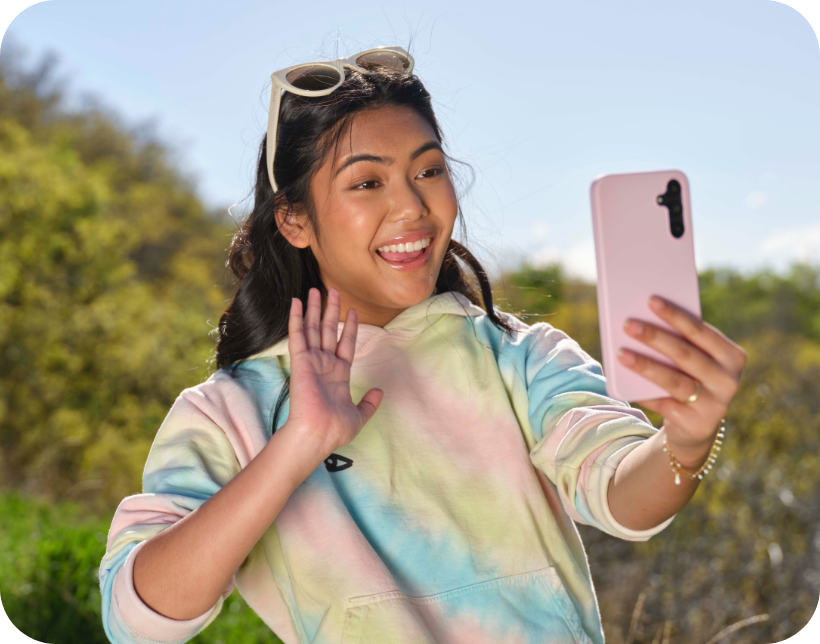
Is My Child Ready For a Phone?
One of the most common questions parents ask is: What is a good age to get a phone for a child? The truth is, there’s no magic number. Experts agree that age alone shouldn’t be the deciding factor — readiness depends more on your child’s maturity and responsibility.
Before making a decision, consider how a phone would benefit your child. Do they need it for safety? To stay in touch after school? For educational purposes? These are important factors, but just as crucial is whether they can handle the responsibility that comes with owning a device.
Think about how your child manages other responsibilities. Do they follow household rules, complete homework on time, and respect screen time limits? If they handle boundaries well in other areas, they may be ready for the added responsibility of a phone.
While most Americans believe kids should be at least 12 or 13 years old before getting a smartphone, studies actually show that 69% of kids have one by age 12.
Every family is different, so the best age is the one that makes sense for your child and your circumstances.
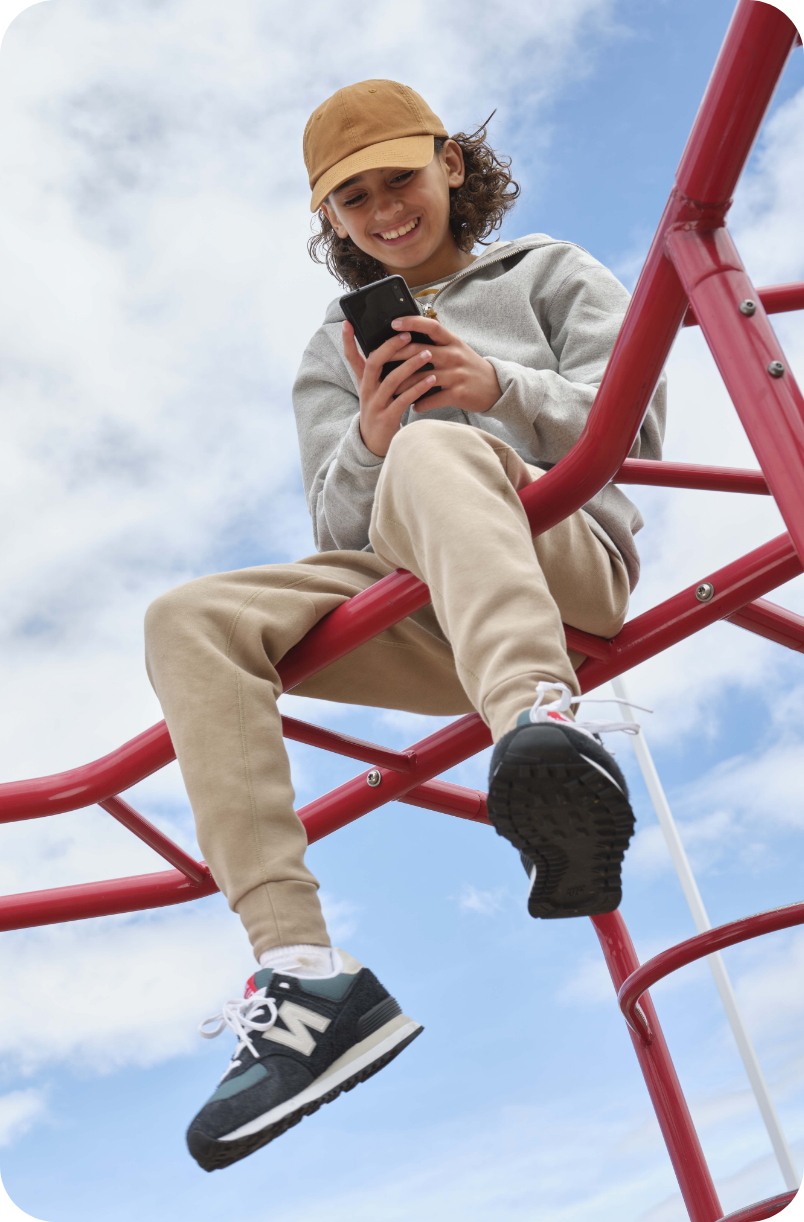
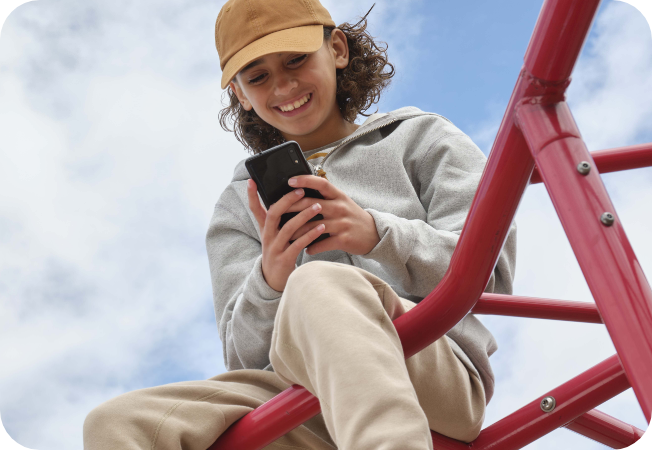
What Type of Kids Cell Phone Should I Get?
The right and best phone for kids doesn’t have to be the latest iPhone or Android with all the bells and whistles. In fact, starting with a simpler, more controlled device can help kids ease into the responsibility of owning a phone without the risks of full internet access.
If your main goal is safety and communication, a simple phone for kids or a kid-safe phone may be all your child needs. These options encourage responsible use without the distractions of a traditional smartphone. However, if your child needs a device for schoolwork or specific apps, a smartphone with strong parental controls might be a better fit.
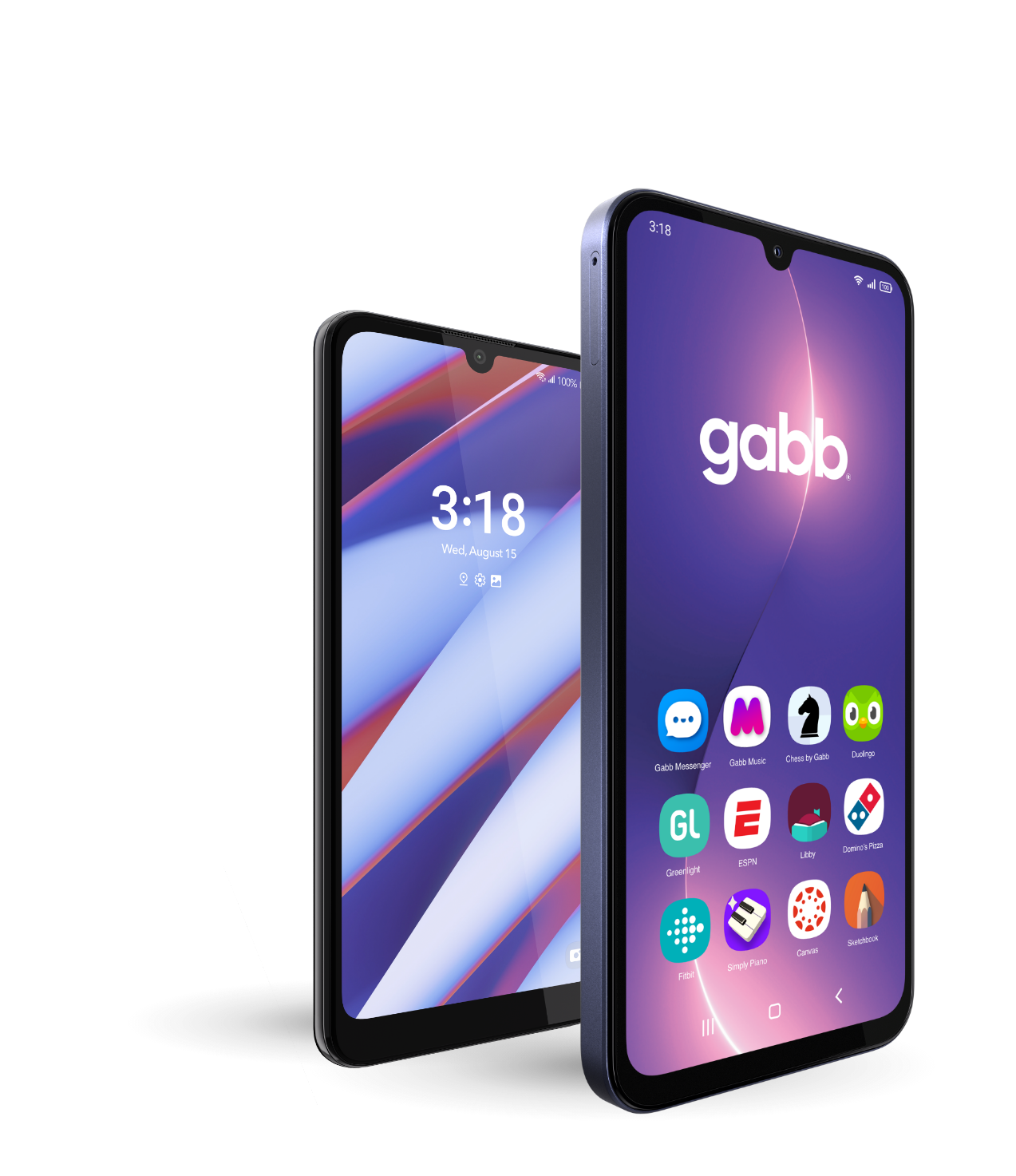
What Is a Gabb Phone?
A Gabb phone is a kid-friendly smartphone designed with safety and simplicity in mind. This kids’ cell phone limits internet access, blocks social media, and removes addictive games.

What Can Gabb Phones Do?
Gabb phone for kids allows calls, texts, and access to pre-approved apps, giving them a way to stay connected while minimizing exposure to online risks. A full list of Gabb phone apps can be found on our website or in the app store through MyAccount. Additional apps are added frequently, and customers can always request others be added.
Gabb phone texting and video calls use Gabb Messenger, which notifies parents of any concerning communication and blocks inappropriate content, while Gabb Guard blocks spam calls and texts.
For those looking for a phone that only calls parents, consider the Gabb Watch — a wearable phone that gives parents full control over the contact list, allowing them to add only approved numbers.
Frequently Asked Questions
Built-In vs. Adjustable Parental Controls
One of the benefits of kid-safe phones like Gabb is that they come with Built-in protections — such as safe messaging, spam-blocking, and GPS tracking. Plus this phone for kids has no internet browser or social media. These devices are designed with safety in mind from the start, so parents don’t have to worry about setting restrictions because it’s already done for you.
If you choose an iOS or standard Android device, you’ll have access to built-in parental controls that let you manage screen time, app downloads, and online activity. While these tools allow you to start with strict limits — like blocking the internet or restricting contacts — you’ll need to actively set them up, monitor usage, and stay on top of updates. Kids are often quick to find workarounds, and as platforms evolve, so do their settings. Going this route requires ongoing effort to ensure protections stay in place and adjust as your child grows.
No matter which phone you choose, the key is finding one that aligns with your child’s maturity and your comfort level, while keeping safety the priority.
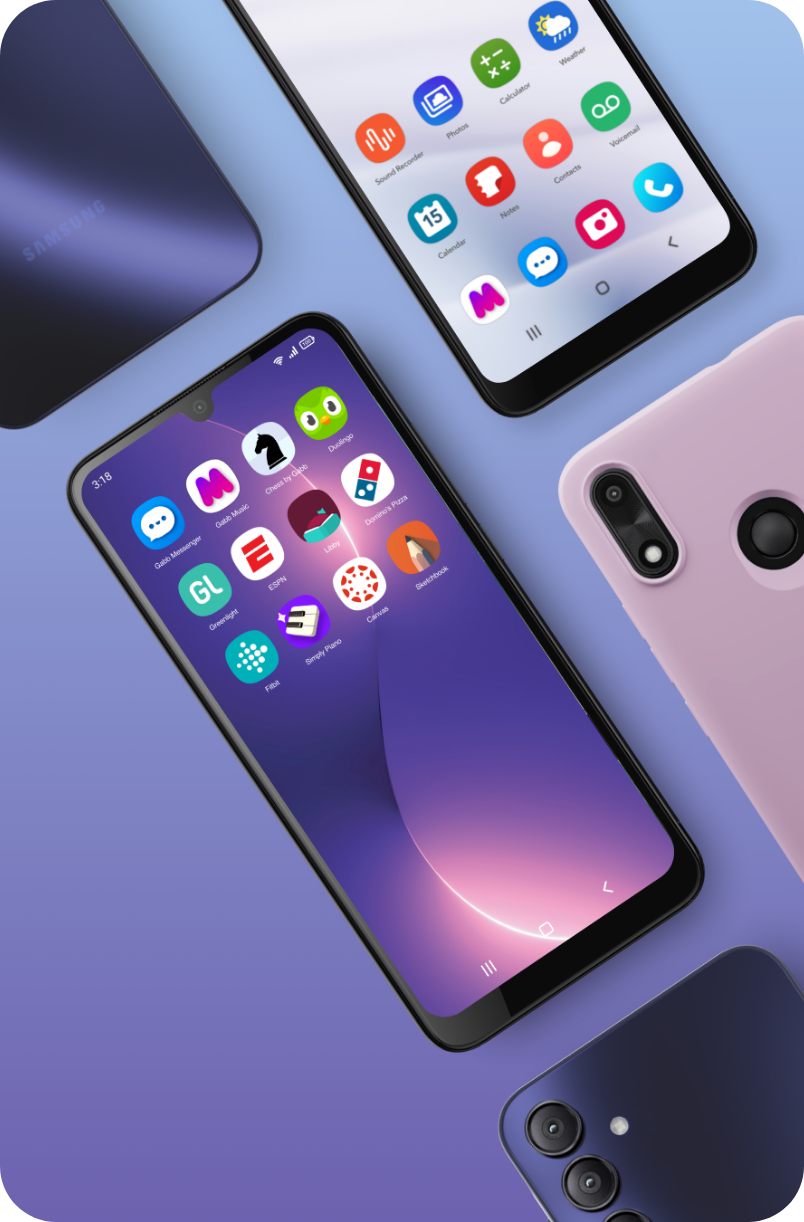
New vs. Used
A brand-new phone isn’t always necessary. Many parents start with a hand-me-down or a refurbished phone with restricted features. If you go this route, be sure to reset the device, enable parental controls, and remove unnecessary apps before handing it over.
New phones on the other hand offer the advantage of starting fresh for a smoother experience, better battery life, and longer software support. New phones can be significantly more expensive than used ones, and for kids who may lose or break their device, the higher cost could be a concern. That said, not all new phones come with a hefty price tag. Gabb phones are much more affordable than most adult smartphones, making them a budget-friendly choice for families who want a safe, distraction-free device without overspending.
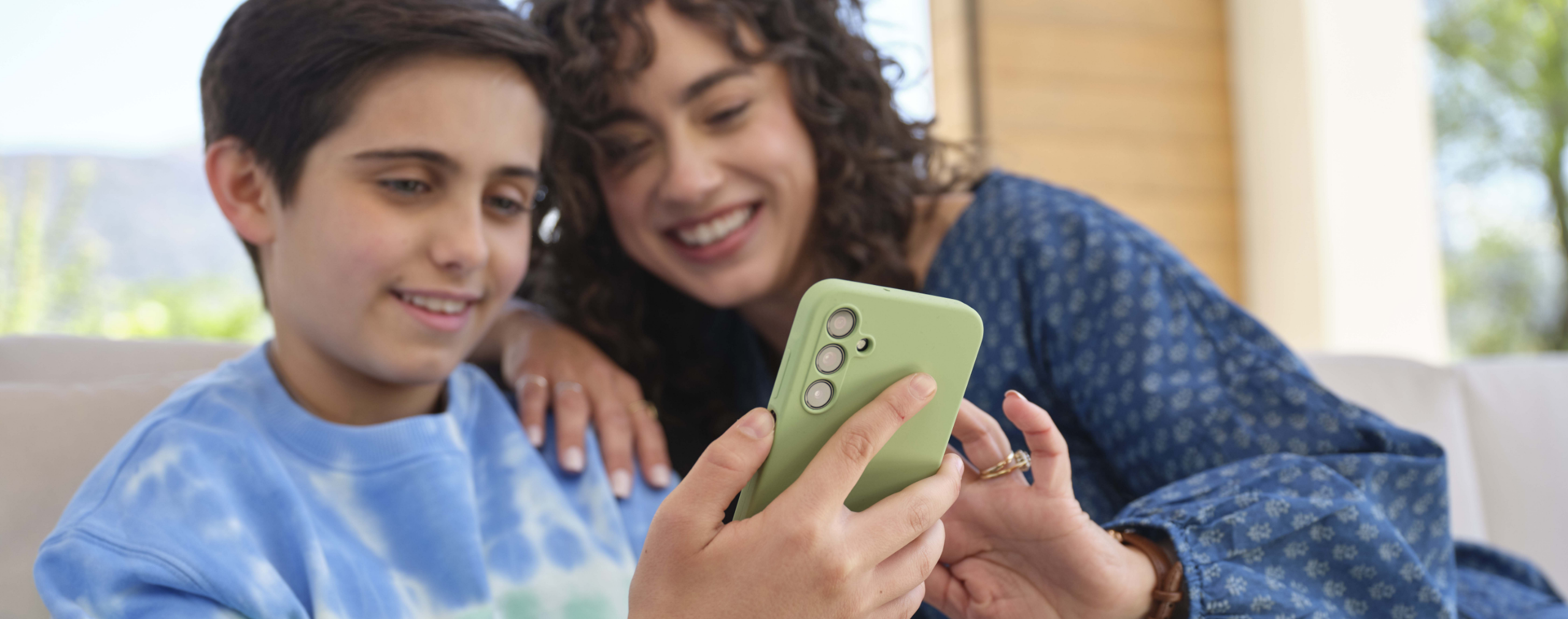
Setting Digital Boundaries From Day One
When you gift a phone — especially during special occasions like birthdays or holidays — it’s natural for children to feel a strong sense of ownership. This feeling can sometimes make boundary-setting challenging. Kids may believe that because the phone was “theirs” from the start, parents shouldn’t control how or when they use it.
To avoid this, set expectations from the start. Make it clear that while they’re responsible for the phone, you’re also involved in ensuring it’s used safely and appropriately. A phone isn’t just a personal device — it’s a tool that comes with family guidelines.
Before they even start using the phone, sit down together and go over some key expectations:
- Screen Time Limits: Decide when and how long they can use their phone each day.
- Off-Hours: Set times when the phone should be put away, such as during meals, before bed, or at school.
- Screen Time Limits: Talk about appropriate texting, online interactions, and what content is off-limits.
Some kids respond well to a written phone contract that outlines these rules, while others benefit more from ongoing discussions. A contract can serve as a clear reference point if disagreements arise, while regular check-ins help reinforce expectations and allow room for adjustments as your child matures.
Choosing the Right Parental Controls
Parental controls are an essential tool for guiding your child’s phone experience, but it’s important to remember that no feature is a one-size-fits-all solution. While they can help enforce boundaries, no parental control can replace real conversations — kids need to understand why these limits exist and how they protect them.
Many devices come with built-in parental control settings that allow you to:
- Set screen time limits
- Restrict app downloads
- Monitor activity and content filters
- Track the phone’s location
There are also third-party apps that offer additional monitoring and filtering features, but not all of them are equally effective. Some claim to offer strong protections but may fall short, so it’s crucial to research before relying on them.
Gabb phones for kids are designed with safety as the top priority, simplifying many concerns for parents with our built-in protective features. Gabb phones limit internet access and social media by default, removing the need for complex parental controls. If you choose a more advanced phone, setting up and regularly updating parental controls will be necessary to help enforce the boundaries you’ve established.
Parental controls aren’t a set-it-and-forget-it tool. Kids are naturally curious and tech-savvy, often finding workarounds to restrictions. As they grow and their needs change, you’ll need to adjust settings, monitor their habits, and keep communication open. The goal isn’t just to block harmful content but to help them develop the self-discipline and digital responsibility needed to navigate technology safely.
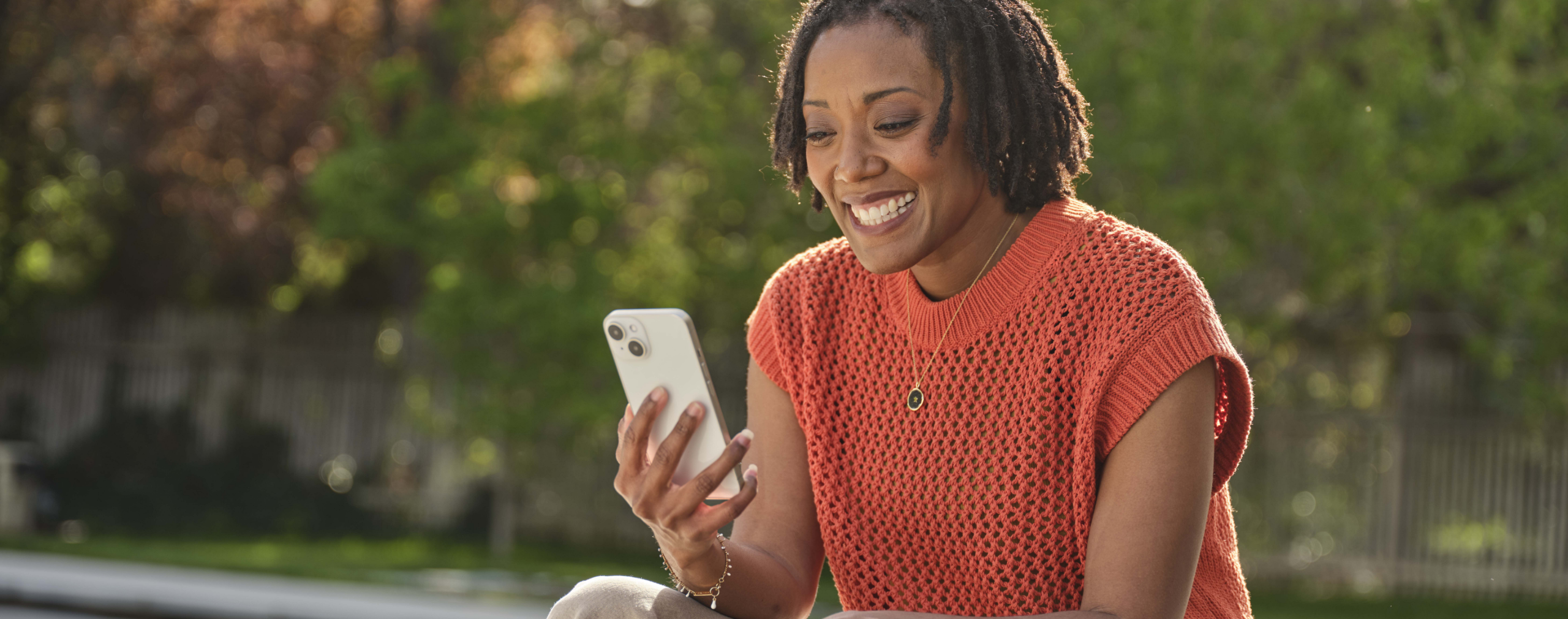
Talking About Online Safety and Responsibility
A kids first phone is more than just a tool — it’s an opportunity to teach lifelong digital responsibility. Talk with your child about the importance of online privacy, recognizing and avoiding cyberbullying, and understanding that not everything online is trustworthy.
Emphasize that anything they post, text, or share can have lasting consequences. Most importantly, create an open line of communication so they feel comfortable coming to you with questions or concerns. Encourage them to think before they share, avoid engaging with strangers online, and never give out personal information.
By preparing them early, you’re helping them develop a healthy relationship with technology that will benefit them into adulthood.
Managing Costs and Phone Plans
Choosing the right phone plan for your child involves balancing affordability, features, and flexibility. Many major carriers offer family plans that allow you to add a line at a discounted rate, but be mindful of hidden fees, data overages, and long-term contracts. Prepaid plans are another alternative that let parents control costs and avoid surprise bills.
Gabb phone plans offer flexible packages that can be adjusted at any time, with options ranging from no contract to a 2-year contract. Every plan includes unlimited talk and text, Gabb Messenger for safe communication, and Gabb Guard for added security, ensuring a worry-free experience for both parents and kids.
Before committing, consider your child’s needs — do they need unlimited talk and text, or would a limited plan encourage more mindful phone use? By carefully selecting a plan, you can provide your child with a phone while keeping expenses manageable.
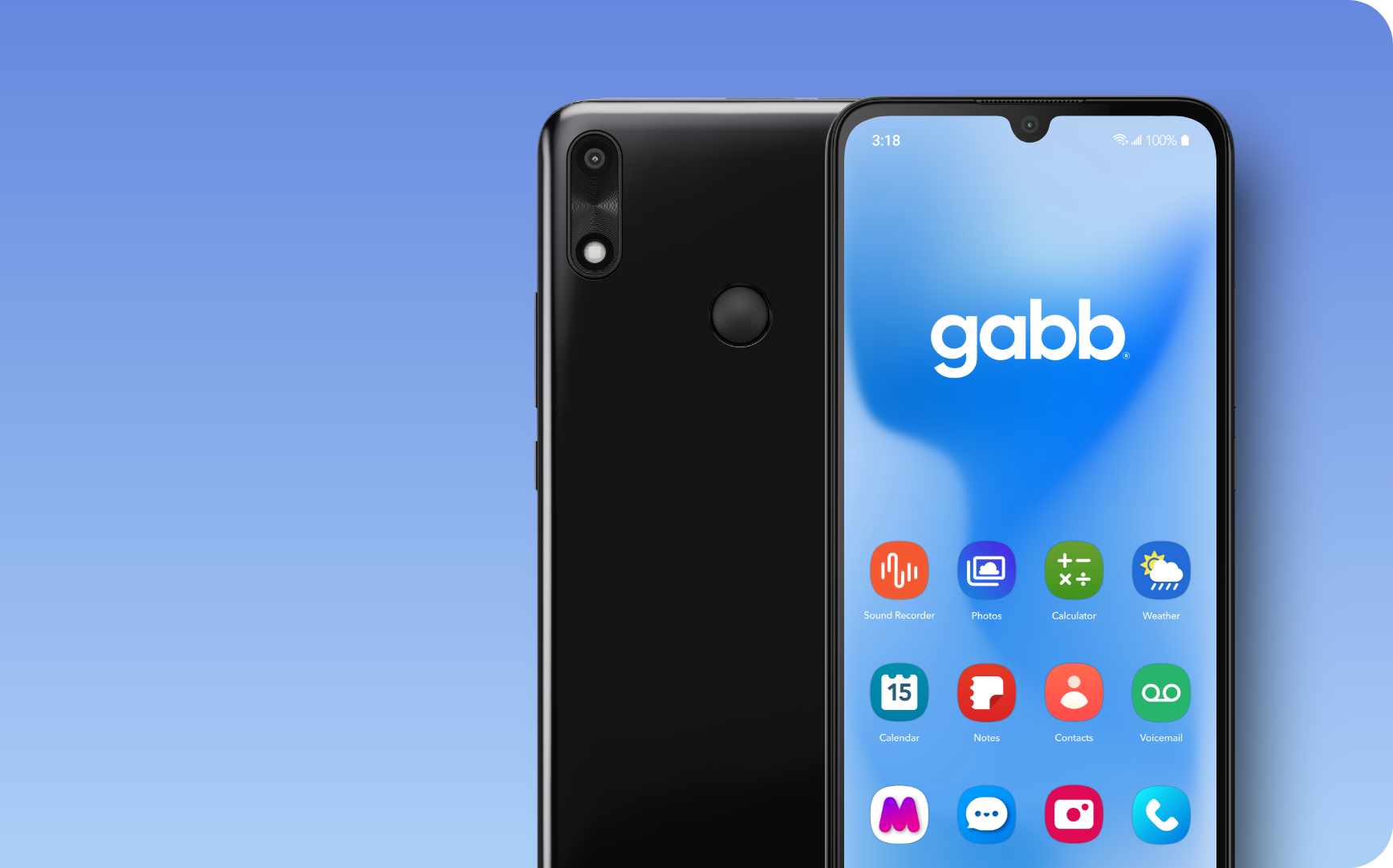
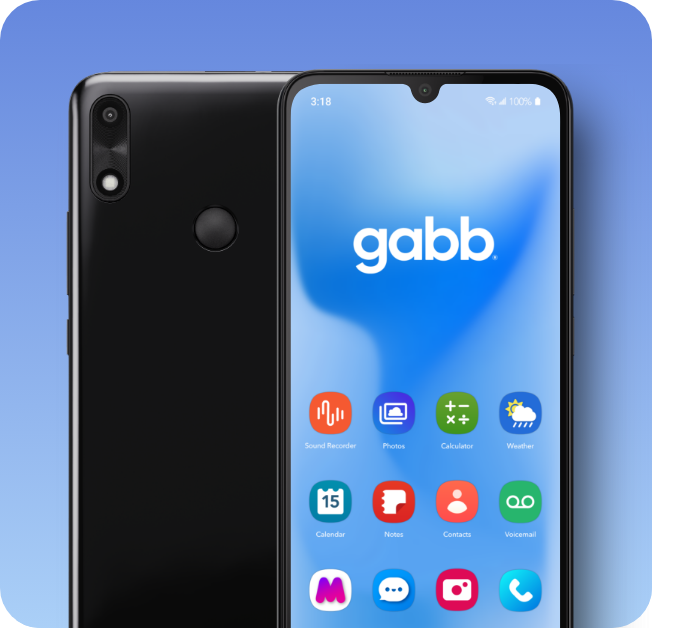
Preparing for Common Challenges
No matter how well you set expectations, challenges will arise as your child navigates their first phone. Being prepared for these common issues can help you address them proactively and reinforce healthy phone habits.
Making This a Positive Experiences
Giving your child their first phone is a major milestone, and with the right approach, it can be an exciting and empowering experience for both of you. Instead of focusing solely on rules and restrictions, see it as an opportunity to build trust and encourage responsibility. Celebrate this new phase by teaching them how to use their phone safely and respectfully.
As your child grows, their needs and maturity levels will change, so it’s important to keep communication open and ongoing. Rather than just monitoring their activity, engage with them about their favorite apps, conversations with friends, or any challenges they’re encountering. Praise their good choices and guide them through any mistakes with understanding and support. As they demonstrate responsibility, you can gradually adjust rules and give them more freedom.
By viewing their tech use as a step-by-step journey, with a clear plan, open communication, and ongoing support, you can help your child develop a healthy, balanced relationship with technology that will grow with them, setting them up for success in the digital world.
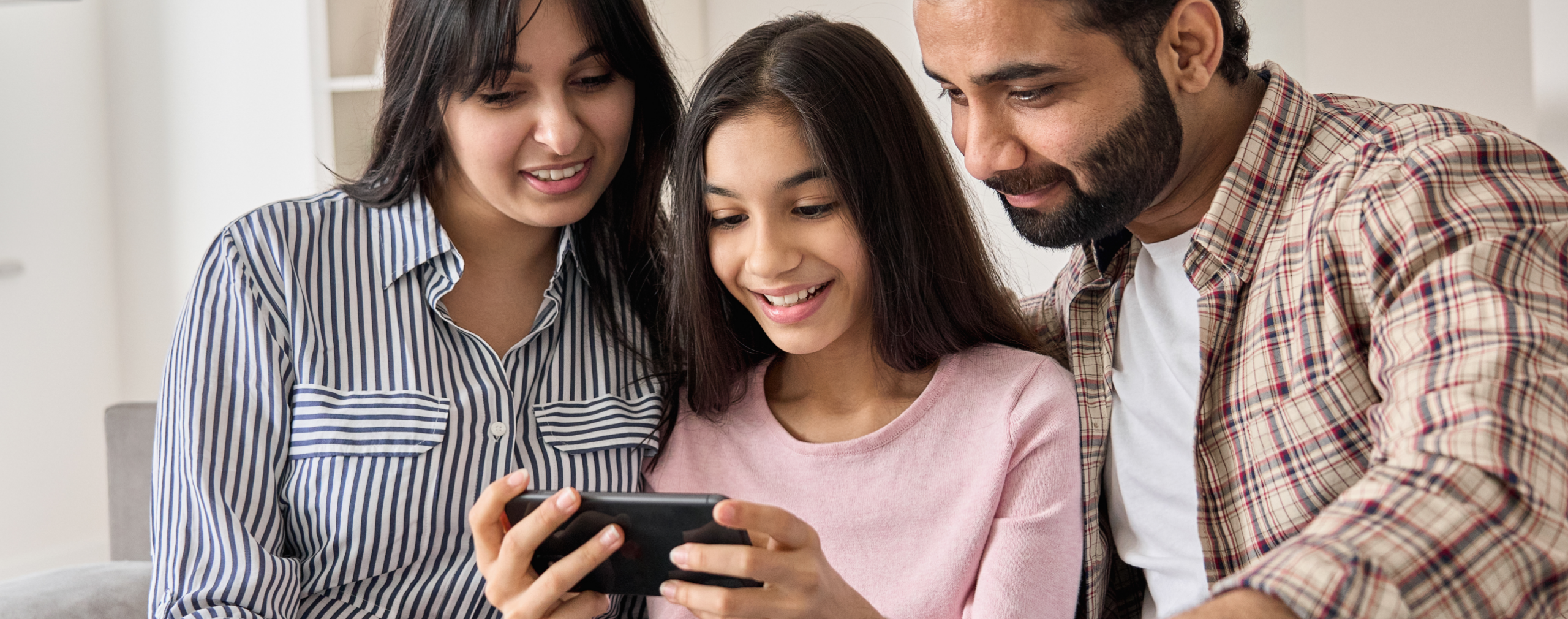
Choosing a Cell Phone for Kids
Use this checklist to determine if your child is ready for a phone and how to approach this milestone.
Maturity & Responsibility
-
Does your child follow rules and respect boundaries?
-
Can they take care of personal belongings and handle consequences for mistakes?
Digital Safety Awareness
-
Do they understand online privacy and the risks of sharing personal information?
-
Are they aware of cyberbullying and how to avoid it?
Communication Skills
-
Can they openly discuss their online activities and contacts?
-
Will they come to you if something makes them uncomfortable?
Need for a Phone
-
Do they need a phone for safety or practical purposes, like staying in touch or organizing school activities?
Time Management
-
Can they balance phone use with other responsibilities like schoolwork and chores?
-
Are they ready for screen time limits?
Parenting Commitment
-
Are you ready to set rules and use parental controls?
-
Are you prepared for ongoing conversations about phone use?
If you said "yes" to most of these, your child may be ready for a phone, and you’re prepared to guide them through this new responsibility.
What Kids Think
I can focus on real-life stuff.
I don't have to worry and can focus on doing real-life stuff. The camera app is great for grabbing videos of skate tricks. And I like the voice recorder app for recording beats on my drums.
Dylan
10 Year Old
Gabb Phone User
I can stay in touch with family.
I like my Gabb Phone because it lets me stay in touch with my family, like my grandmother. It has cool stuff like a radio and text messages and helpful apps like a calculator. I like that it doesn't have any social media stuff so I don't gave to worry about that.
Emily
12 Year Old
Gabb Phone User
I love the camera!
I love the camera! There's a bunch of different filters: rainbow, and a bunch of types of filters. I like using the timer app so then I can see how long it took me to ride a trail or run.
Jason
14 year Old
Gabb Phone User
It has a long lasting battery.
Sometimes I don't charge my phone for the whole week and it's fine. Texting or calling doesn't really use that much juice.
Kate
14 Year Old
Gabb Phone User
I feel safe when I have my Gabb Phone.
I like my gabb phone because I can text and call my mom when i need to. I also like the camera so I can take cool pictures. I feel safe when I take my phone to school.
Michael
9 Year Old
Gabb Phone User
I'd rather have a Gabb Phone that a smart phone!
I'd rather have a Gabb PHone than a smartphone, it's just a lot safer. Ther are so many thinkgs you can do on it. Like with the voice recorder, I record my songs and stuff that I like.
Genevieve
12 Year Old
Gabb Phone User